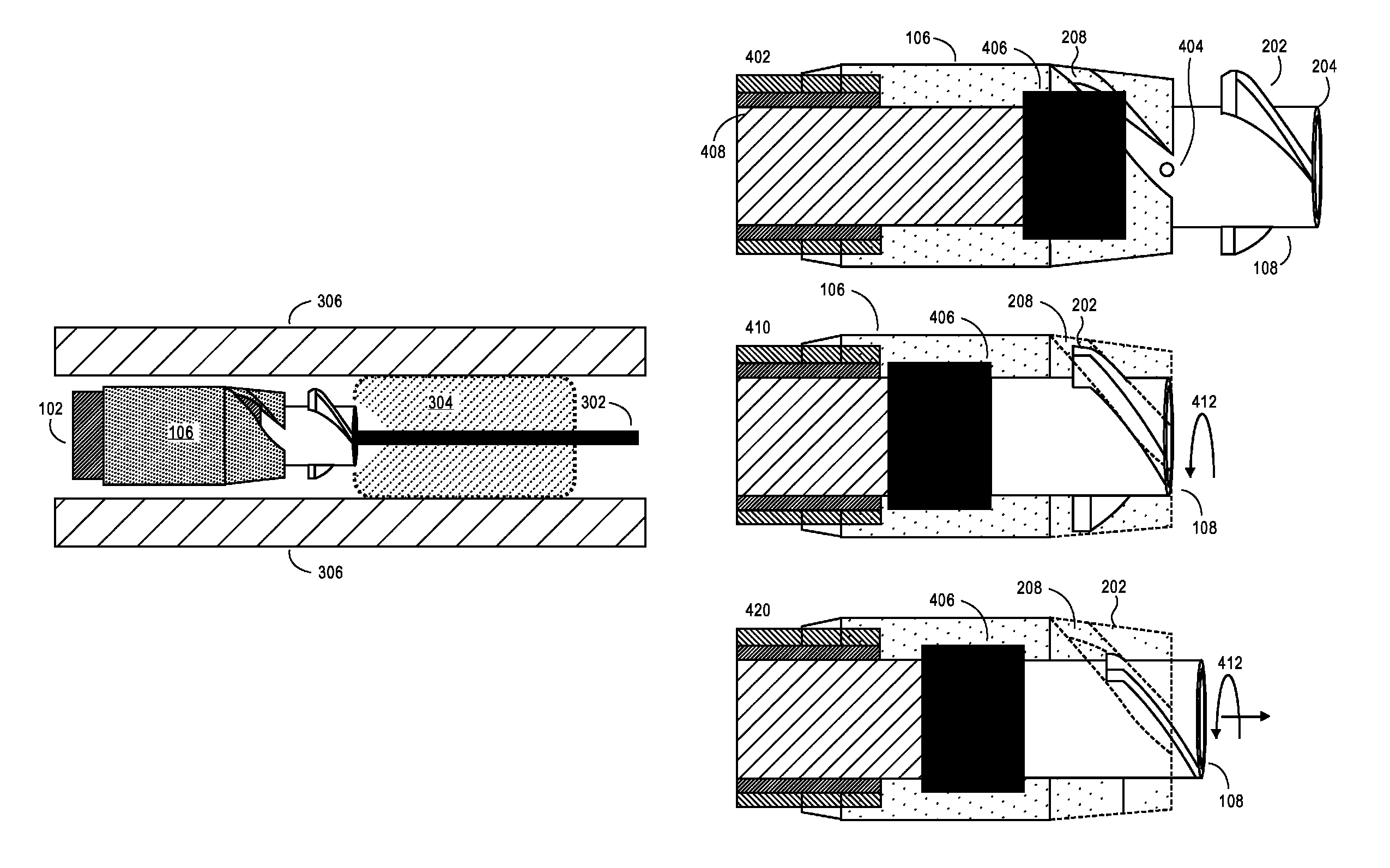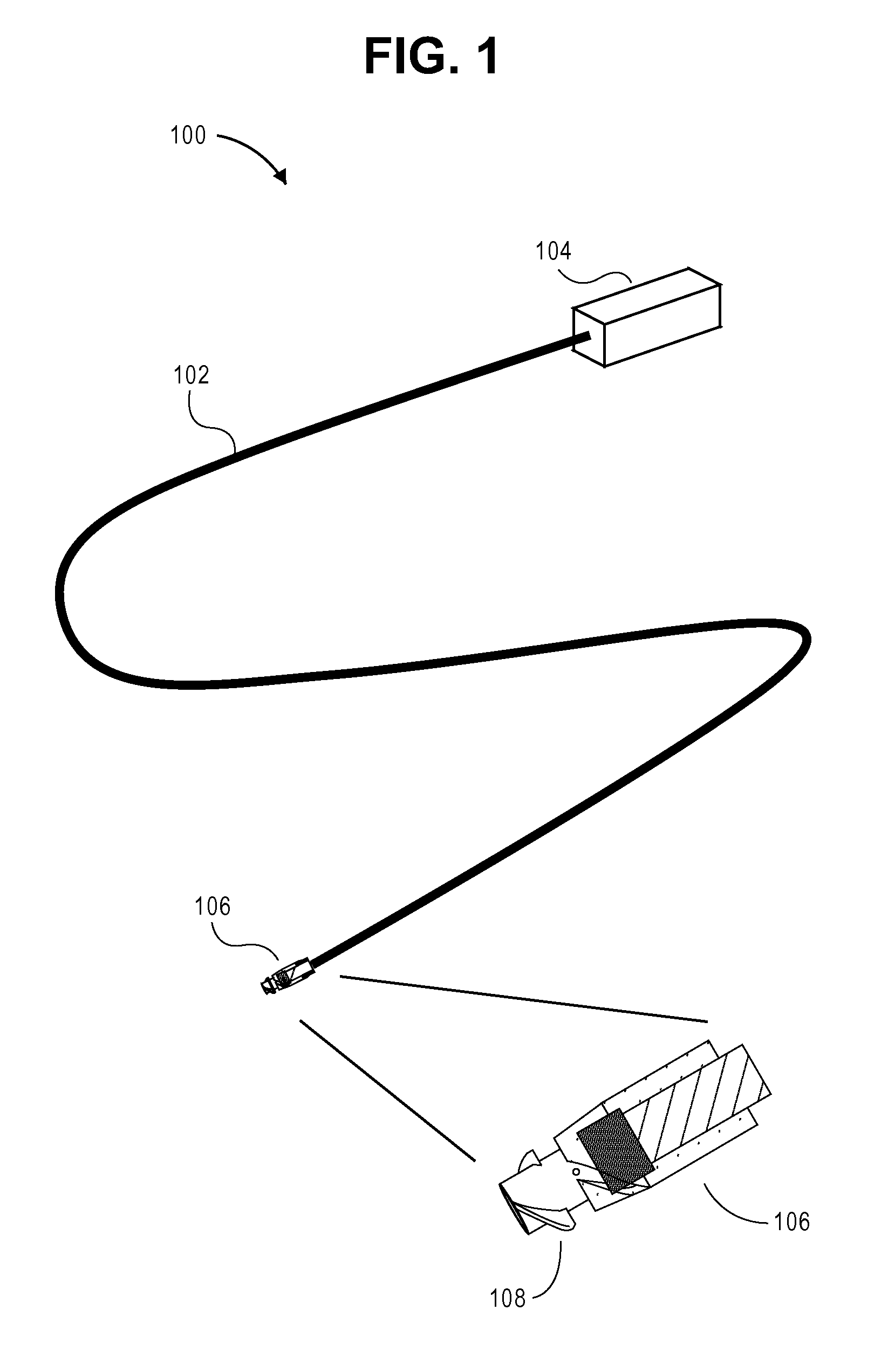Catheter system and method for boring through blocked vascular passages
a catheter system and vascular passage technology, applied in trocar, medical science, surgery, etc., can solve the problems of ctos that occlude the peripheral arteries of pad patients, gangrene, limb loss, critical limb ischemia (cli), etc., and achieve the effect of reducing the risk of ctos
- Summary
- Abstract
- Description
- Claims
- Application Information
AI Technical Summary
Benefits of technology
Problems solved by technology
Method used
Image
Examples
Embodiment Construction
[0028]Although, throughout this discussion, applications of this device for creating a passage through refractory atherosclerotic plaque from arteries, particularly coronary or peripheral limb arteries, are frequently used as examples, it should be understood that these particular examples are not intended to be limiting. Other applications for the present technology may include removal of kidney stones, in which case the device will be intended to traverse the ureters; gallstones, in which case the device will be intended to traverse the bile duct; enlarged prostate blockage of the urethra, in which case the device will be intended to traverse the urethra; blocked fallopian tubes, in which case the device will be intended to traverse the fallopian tubes; treatment of blood clots, removal of material trapped in the lungs, etc. In general, any unwanted material occupying space in a body lumen may be surgically removed by these techniques. Similarly, although use in human patients is ...
PUM
 Login to View More
Login to View More Abstract
Description
Claims
Application Information
 Login to View More
Login to View More - R&D
- Intellectual Property
- Life Sciences
- Materials
- Tech Scout
- Unparalleled Data Quality
- Higher Quality Content
- 60% Fewer Hallucinations
Browse by: Latest US Patents, China's latest patents, Technical Efficacy Thesaurus, Application Domain, Technology Topic, Popular Technical Reports.
© 2025 PatSnap. All rights reserved.Legal|Privacy policy|Modern Slavery Act Transparency Statement|Sitemap|About US| Contact US: help@patsnap.com



